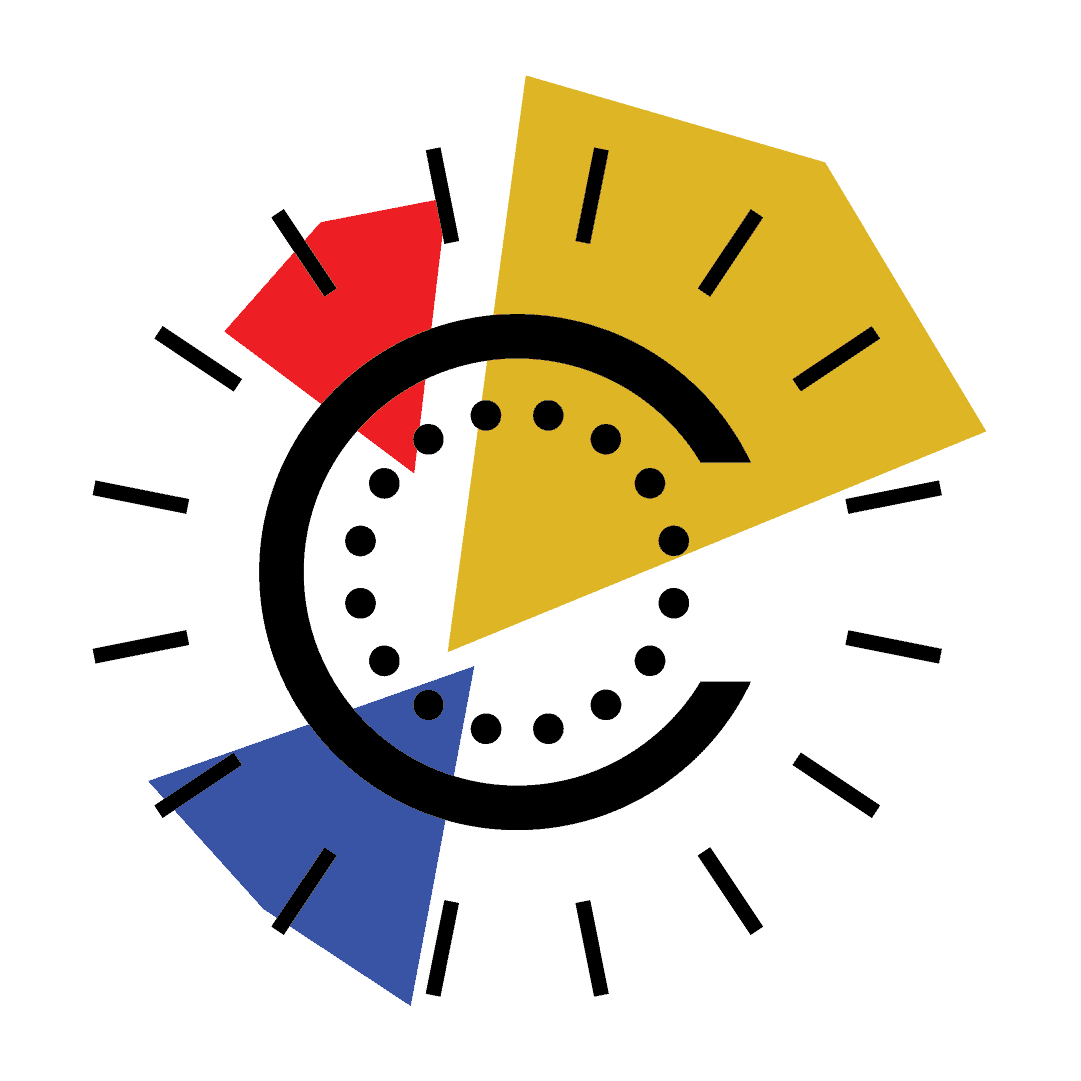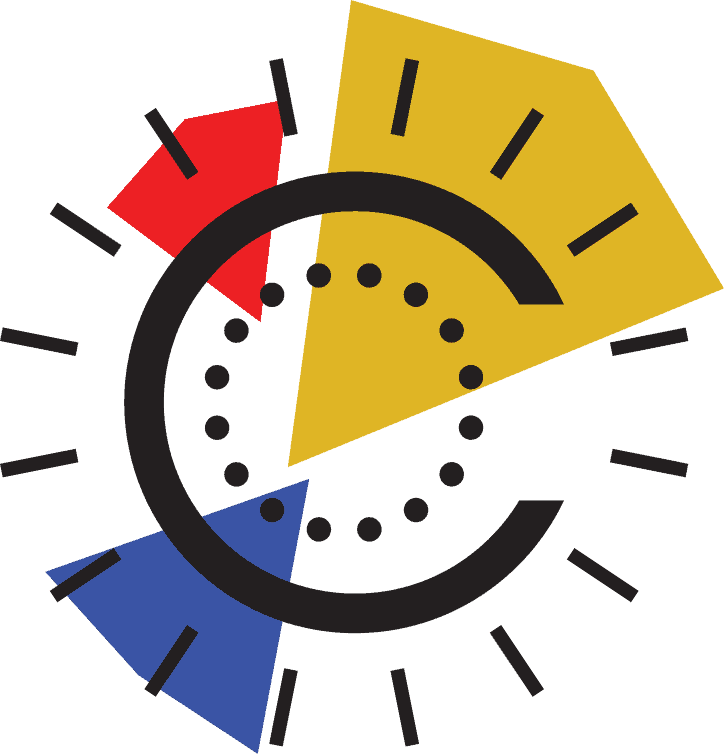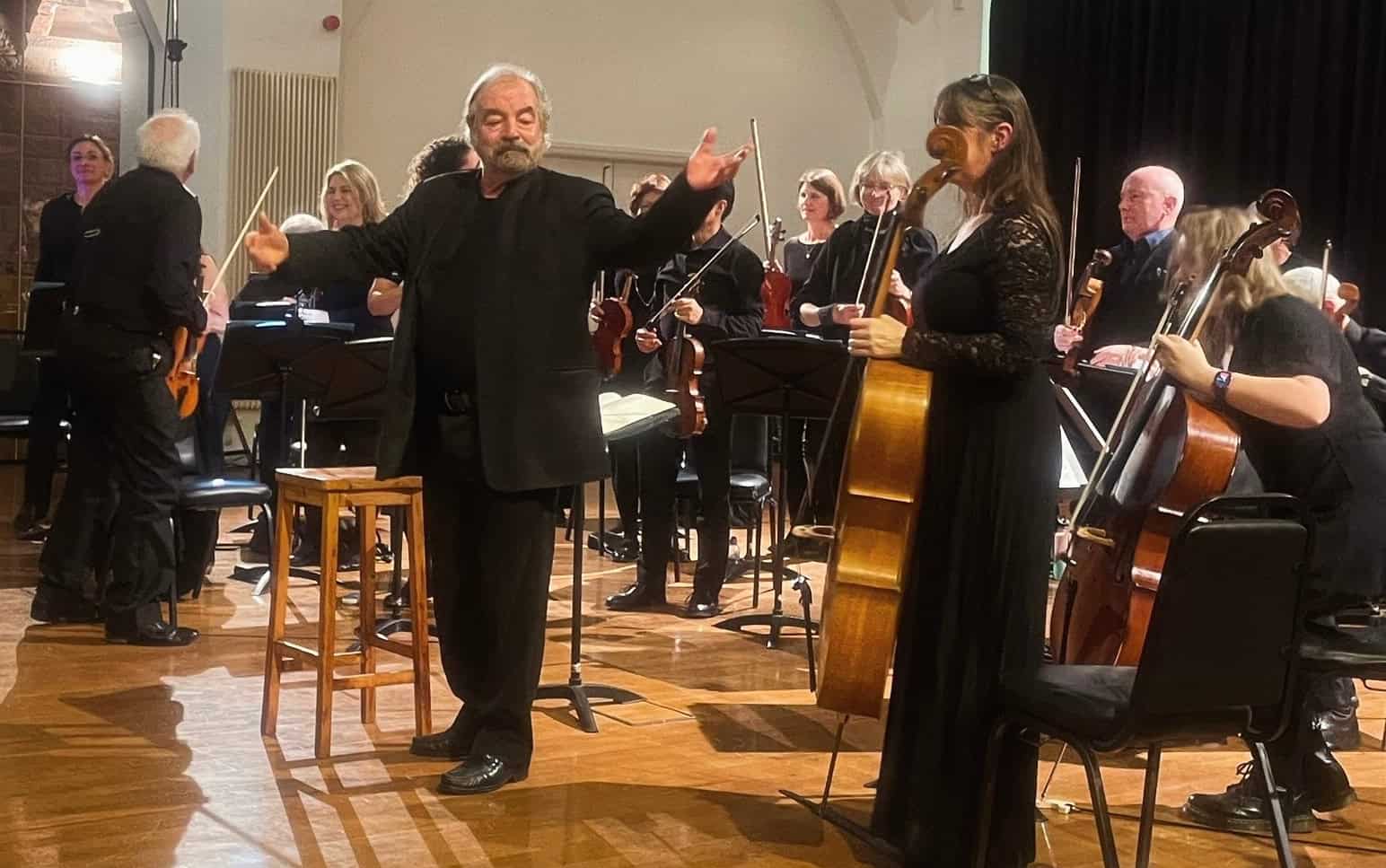

‘It was a very cool experience, I loved it and I will definitely come again. The choir, the orchestra, and the singers were sublime’.
Isabel Garcia Mateos , BAC in Art History and Media and Communication
‘An ambitious and varied programme brilliantly played and beautifully sung. The conductor, orchestra, and choir delivered lively and engaging performances and the soloists really shone! It was a fantastic concert’.
Rachael Diop, MA in Creative Music Practice
"... I have had the amusing idea of writing a concerto for violin and cello. If it is at all successful it might give us some fun. You can well imagine the sort of pranks one might play in such a case"
Brahms’ letter to Clara Schumann in 1887
I’ve been to most concerts given by the Society over many years but never before has anyone asked me to review one. I have no formal music training beyond Grade 5 theory so please excuse any technical mistakes.
I’d been looking forward to this one for a while because the soloists in the first item – Brahms’ Double Concerto for Violin and Cello – were the Orchestra’s leader, Leo Byrne, a very gifted amateur, and his son Nicholas, a professional musician. How proud each would be of the other, I thought, what a rare opportunity, how infinitely more sophisticated than me accompanying my children when they were young. What a joy. But also, probably, how nerve-wracking, each wanting to do their best for their beloved relative.
The orchestra came on. Leo, as usual, shifted attention away from himself to an audience member aged 100. And still attending concerts. Don’t we all wish and hope for that degree of energy and interest?
Leo and Nicholas sat almost facing one another though slightly angled towards the audience. Their expressions became focussed, they raised their bows, ready to begin. It’s not a piece I know so I waited, focussed.
The piece has three movements and in this first one most of the figures were led by the cello, a glorious rich sound, followed and embellished by the violin. The duet was a dance between the two, bouncing back and forth. Unusually, the orchestra has a much bigger role than in many concertos. Rather than being backup singers they had their own figures and their own initiatives in both melody and structure. Sometimes the dance was led by the violin and the cello’s depth and seriousness were expanded into soaring melodies right up to my favourite sounds on a violin, the harmonics which extend the range beyond the natural reach of the strings. At times orchestral string players used a technique which is particularly noticeable in this piece. It’s called pizzicato and it requires the string players to abandon their bows – it’s quite tricky, I imagine to hold them firmly while using the fingers independently - to pluck the strings, unleashing a whole different range of sound. Under conductor Stephen Pratt’s clear beat they were always in perfect time with one another.
The second movement, to me, brought broad, sweeping melodies reminiscent of folk music and highly descriptive. I saw lush meadows in a perfect pastoral setting with waving corn and wide, deep rivers sweeping through the landscape. The solos were expansive and majestic as were the melodies. This was a controlled environment where no part became dominant but all performed their proper roles in harmony.
The final movement opened with greater urgency. It seemed we now had 4 component parts: each solo, the duet and the orchestra, all swirling with determination like a room full of dancers following complicated patterns. The figures were repeated but not identically, like a series of concentric circles, each constructed from a different decorative style. Each string section made their own bow patterns, perfectly in agreement with each other and with Stephen’s lead. The brass – and what a group they were – became more prominent, sometimes glowing in the background and at others warming to prominence. Minor keys resolved back to major ones, growing and slowing until it was time for the build up to the climax. Hearts beat faster, as the sense of urgency grew with volume and speed right up to the final, consolidating chords.
The audience applauded strongly while father and son embraced, small smiles of satisfaction on both faces. Time to stand down for an interval.
The second half was Brahms’ 2nd Symphony. To my amazement both soloists were back, playing at regular desks in the orchestra. This is Leo’s usual role but it was extraordinarily generous of Nick to do likewise. The orchestra responded well. Not only were the lower strings led by Nick but there were 6 other cellos and 3 double basses, a wonderful foundation of sound which Stephen made very good use of.
This piece has four movements and it opened with a beautiful melody that reminded me of the second movement in the Concerto. There were the same broad legatos and confident sweeps of sound but also sections of pizzicato and syncopated rhythms which were slightly unnerving in the context. Here, I thought, were new thoughts, a reaching out and striving for change.
The second movement roved around the orchestra, featuring now the lower strings, now the upper, now the brass and woodwind, each having its moment then handing on to their neighbours, a collaborative and communal experience. Melodies launched in one section were echoed in another with small changes, became arpeggiated passages then blended back into smooth lines. In the lovely, round acoustic of the Great Hall the parts warmed and led us into a feeling of peace.
The third movement saw lighter, spring-like movement alternate with a more martial tone and rhythm as the higher instrumental dancers wove their steps around the soldiers. We were shown balance and steadfastness, variety and calm.
In the last movement many of the earlier features re-emerged with pizzicato passages followed by firm, scalic ones. The strong, lower strings and brass gave us a joyous sense of confidence while bell-like upper melodies sounded victorious. Certainty abounded as we were led to the finale which resonated with its repeated chords.
An enthusiastic audience clapped long and hard while Stephen highlighted particular stars before all left, tired out but doubtless exhilarated by the satisfaction of a job well done and positively recognised.
A wonderful couple of hours with which to celebrate my birthday.
Tricia Clewett
"The orchestra, conducted by Stephen Pratt, brought Mozart and Joseph Bologne's music to life in a vibrant way. It was fascinating to hear Bologne's symphonies alongside Mozart's; both composers had such unique voices, and seeing Bologne finally getting the recognition he deserved was beautiful. The warmth and energy of the orchestra filled the whole evening. This thoughtful programme commemorating Black History Month and honouring Mark Julius was enlightening and inspiring."
Mai Sanchez, student
The Two Chevaliers concert was a great success! The orchestra was on good form, and there was prolonged applause from an enthusiastic audience at the end. The concert was a tribute to Mark Julius, who led the orchestra’s second violins for many years and who died in January of this year. He had planned the concert programme as a contribution to Black History month. Mark’s family and close friends attended and were delighted with the event.

It maybe came as no surprise that the extraordinary life of Joseph Boulogne, Chevalier de Saint-Georges attracted the attention of Los Angeles-based film company Searchlight Pictures, who went on the make the 2022 biopic Chevalier. The film has had the positive impact of bringing Boulogne’s music to a wider public, though it has to be said that the telling of his life is somewhat fictionalised. Whilst it is true that both Mozart and Boulogne were in Paris at the same time, in 1778, there is little evidence that they met, let alone had the ‘cadenza-duel’ with which the film opens. Planning for his trip, Mozart knew from earlier correspondence with Mannheim musicians that the best orchestra in Paris was not the well-established Concert Spirituel but the Concert des Amateurs, directed by Boulogne. However, in the event his ‘Paris’ symphony (k.279) (composed during this visit) was actually written for the Concert Spirituel, directed by Joseph Legros. Some years later, Boulogne did meet Joseph Haydn and directed the composer’s own ‘Paris’ Symphonies in 1786 with the Concert de la loge Olympique, an orchestra famed for having 40 violins, and which had effectively been the successor to the Concert des Amateurs.
It is generally thought that Boulogne (or Bologne) was born in the French colony of Guadaloupe on Christmas Day, 1745 to a young slave who was known as Nanon. His date of birth was based on a that given in his death certificate, but there is documentary evidence that Boulogne believed the year of his birth to be 1748. The father was George Boulogne de Saint-Georges, a white wealthy plantation owner, and in the detailed (but uncredited) biography in Artaria Editions (https://www.artaria.com/pages/saint-georges-joseph-bologne-de-1745-1799) it is claimed that George was ‘undoubtedly’ in exile in Haiti by the time Joseph was born, which would confirm the later date. His exile came about because he had been accused of murder in 1747, and sentenced to death in his absence – it seems that the charge might have been somewhat flimsy and he was pardoned some years later. When he could, George left Guadaloupe for Paris and to his credit took not only his wife and her daughter, but Nanon and Joseph, who was seven at the time.
Once in Paris, George ensured that Joseph would have a good education, which he paid considerable sums for. Joseph had already shown talent as a violinist in Guadaloupe, and this talent continued to be nurtured in Paris. Additionally, he developed skills in dancing, riding and fencing, and he was to become an outstanding swordsman. But whilst his swordsmanship gained him many admirers (and money in exhibition duels) it was the violin that was to become his main activity. By the late 1760s he had become the leader of the Concert des Amateurs, and by 1773 became its director when the founder of the orchestra, Gossec, left for the Concert Spirituel. By now, he was active as a composer, and two early violin concertos were premiered by him with the Concert des Amateurs in 1772. The two symphonies (op.11) in tonight’s programme were written for this orchestra and were first performed in 1779. Both are written in the standard three movement (quick – slow -quick) pattern of the early symphony, with an andante at the centre and with gigue-like finales, scored for strings with pairs of oboes and horns. Boulogne’s rise within aristocratic circles brought him to the attention of Marie-Antoinette, who bestowed upon him the order of Chevalier, to which he appended the family name of de Saint-Georges. This status did not protect him from racial prejudice, however– a potential appointment as director of the Royal Academy of Music at the Opéra was blocked on the grounds of his colour. With the coming of the French revolution, Boulogne embraced the fight for equality and volunteered for the National Guard in Northern France. Despite early success as a commander, these were volatile times and as things changed he was imprisoned for nearly a year and lucky to escape the guillotine. His musical career never fully recovered, although once he had returned to Paris he did attempt to re-create the Concert de la loge Olympique, putting on concerts between 1797 and 1798. He died of a bladder infection in 1799, aged 53.
The two works by Mozart in tonight’s programme were composed toward the end of his life – the G minor Symphony (k.550) in the summer of 1788 and the Six German Dances (k.600) early in 1791. Whilst the circumstances of the composition of the symphony have been the subject of some debate, there is little doubt about the dances. In 1787 Mozart had been given a contract with the Viennese court by Joseph II. It would appear that the provision of dance music for the court balls in Vienna was one of the few duties required of Mozart in this position. After his death, both Haydn and Beethoven were similarly called upon to provide music for these spectacular events which were famous across Europe. For k.600, Mozart employed all the available instruments of the court orchestra. Although consisting of around forty players, including a full wind section, trumpets (clarini) and drums, there were (curiously) no violas in the orchestra. All six of the dances in k.600 are minuets, but each has a distinct personality.
The G minor symphony was the second of the three symphonies that Mozart wrote in a six-week period in the summer of 1788, and which turned out to be his last works in the genre. Although there has been some speculation that Mozart wrote them without planned performances and simply for himself, the Mozart scholar Neal Zaslaw scotched that idea in his 1989 study of the symphonies
Firstly, there are two versions of the work – a first, with oboes, and a second with both oboes and clarinets. Additionally, Mozart made alterations to the oboe parts of the first version. Zaslaw argues that such alterations would suggest that both versions had been performed or planned to be performed. Additionally, a set of orchestral parts was later discovered, which appear to date from before Mozart’s death. A possible date of performance would have been 16th/17th April 1791 at the Society of Musicians’ annual benefit concert which advertised a ‘grand symphony’ by Mozart, conducted by Salieri. The wind players engaged for the concert included the clarinettists Johann and Anton Stadler, so if we put all that evidence together the G minor is the most likely to have been the ‘grand symphony’ although we can’t discount the Eb, k.543, the first of the three.
The G minor is one of Mozart’s most chromatic works, and even as early as the beginning of the C19th was regarded as the most ‘modern’ (ie ‘romantic’) of his symphonies. There is an edge, a nervous urgency to the outer movements, which probably attracted that description. The slow movement, too, is quite dark in its shifting harmonies – especially in the move from the dominant (Bb) at the end of the first section to the unison C flats that open the second half. The minuet plays with the normal stresses of triple metre and the introduction of hemiola-like patterns (2+2+2) throughout. Only in the G major trio does the sun appear briefly, only for the clouds return in the final movement. Of all Mozart’s works, this is perhaps the one which tells us the most about where his music might have travelled had his life had been longer.
Stephen Pratt